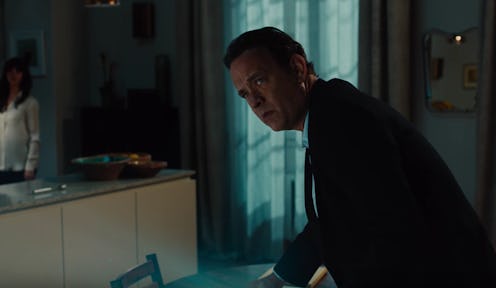
Robert Langdon, the beloved hero of the hit novel and film The Da Vinci Code, is faced with a brand new threat in Inferno, the fourth book in Dan Brown's series and the third book to be adapted into a major motion picture. On screen, Inferno completes the Robert Langdon trilogy that began with the release of The Da Vinci Code in 2006, with a sequel, Angels & Demons, following in 2009. Like the two original films, Inferno sticks pretty close to Brown's story, putting everyone's favorite Harvard Professor, Robert Langdon (played by Tom Hanks), in the middle of an international mystery. Still, the film does make a few key changes to Langdon's Italian adventure, and Inferno, the movie, vs. the book makes for an interesting study.
For the most part, Inferno is extremely faithful to the book. Both begin with Robert Langdon waking up in a hospital after being shot at, suffering from a head wound and unable to remember the last few days. Whisked away by a doctor, Sienna Brooks, after an assassin comes looking for him, he goes on the hunt for a virus meant to curb Earth's overpopulation. A few twists and turns are altered from the text as Robert and Sienna follow clues to the virus, but nothing incredibly substantial.
When Bustle caught up with director Ron Howard at Fort Belvedere in Florence, where the film was shot, Howard explained that these smaller changes were done simply to save time. "You don't take any kind of structural changes lightly," Howard says in the clip below about altering the source material. "But, Dan Brown's books — and he'd be the first to tell — if you adapted them literally, they'd be five [or] six hours long." It seems that most of the smaller changes were made to either save time or ensure that the film could be, as Howard put it, "a standalone movie."
The major difference between the book and the film comes at the end. Spoilers ahead! In classic Hollywood fashion, the dire ending of the book — the spread of the virus and the decision not to cure it — is completely turned on its head. The book Inferno ends with Sienna double-crossing Robert and going after the virus herself, similar to the film. However, Sienna then turns out to be good, with the intention of destroying the virus, not releasing it as she wants to in the film. In the movie Inferno , Robert is able to stop the virus from being released into the world, but the book's ending is much more horrifying. The virus in the book is already released by the time Sienna and Robert get to it, and, with little hope of curing the virus, the characters decide to let it run its course.
Changing the ending to Inferno , according to Howard, reflects the difference in medium. "The ending of a modern movie thriller needs to be quite a bit different than what was a terrific resolution on a literary level for the novel," Howard tells Bustle. Though he doesn't directly address the bleak nature of the original ending, the intent is clear: Hollywood thrillers need to have relatively satisfying endings. An ending where half the population is infected with a virus that makes them sterile is not satisfying, at least not to a mainstream movie audience. Says Howard, "All these things are done, but with an eye toward the movie audience and making it work as a standalone movie," noting that, if you do read the book before seeing the film "you get something to talk about when it's over." You can't argue with that.
Images: Columbia Pictures